Over the last few weeks, quite a few photographers have reached out to me asking for advice. Quite frankly, I’m flattered that anyone would even want my advice. I’m grateful for your inquiries and more than happy to oblige you with some of my experiences. If there are specific subjects you would like me to post about, please let me know.
Preparedness
Being prepared should certainly be one of your top priorities. Showing up to a gig disorganized and unprepared is definitely not good; know your objectives and plan accordingly. Being professional, makes you a professional.
 Two Bodies: You should always carry two camera bodies with you at all times. I recently experienced a situation during SXSW that harshly reminded me of my own advice. I was shooting the Gram Parsons Foundation launch event when the heat caused my camera to malfunction. Realizing I didn’t have my second body, I started to sweat profusely; I was in the middle of taping for my show! We had to stop production so I could go retrieve my second body; the one I should have had to begin with.
Two Bodies: You should always carry two camera bodies with you at all times. I recently experienced a situation during SXSW that harshly reminded me of my own advice. I was shooting the Gram Parsons Foundation launch event when the heat caused my camera to malfunction. Realizing I didn’t have my second body, I started to sweat profusely; I was in the middle of taping for my show! We had to stop production so I could go retrieve my second body; the one I should have had to begin with.
 Batteries: You should always carry extra batteries with you; battery charger as well. You never know how the elements may affect your battery life. You also never know when a shoot might go longer than expected. This is a simple piece of advice but something I see overlooked way too often.
Batteries: You should always carry extra batteries with you; battery charger as well. You never know how the elements may affect your battery life. You also never know when a shoot might go longer than expected. This is a simple piece of advice but something I see overlooked way too often.
 Photography Bags: If you don’t already have one, you need to purchase a photography bag. You never know what you’re going to need, until it’s too late. Carrying extra lenses, batteries, cleaner, and cables is essential. When you arrive to a shoot you should have everything you could possibly need and then some; always prepare for the unexpected. A camera bag is also the protector of your camera; always store your gear properly.
Photography Bags: If you don’t already have one, you need to purchase a photography bag. You never know what you’re going to need, until it’s too late. Carrying extra lenses, batteries, cleaner, and cables is essential. When you arrive to a shoot you should have everything you could possibly need and then some; always prepare for the unexpected. A camera bag is also the protector of your camera; always store your gear properly.
Composition: Taking a great photograph is more than just pointing the camera at your subject and pushing the button, it’s seeing the shot, positioning for it, and capturing the moment. Composition is essential to taking great photographs. Look for interesting objects or walls to use as a backdrop for your subject; this makes for a much better shot. Try to frame your subject slightly off-center; you don’t want your subjects face in the center of the frame. This combination of technique will give your images much more character. Lastly, once you have your subject framed slightly off-center with your interesting backdrop in frame, slightly tilt your camera to the left or right; this will give your images more feel. Take a look at my website and study some of the photos; rock photographer.
 Capturing Emotion
Capturing Emotion
I browse through thousands of images online every week while forecasting trends. Unfortunately, I regularly see a lot of lifeless, emotionless images during the process. Capturing emotion is the key to any photographer’s success; you have to know when to take the shot. One of the best ways to capture emotion is by keeping things loose on set and actually knowing your subject’s personality. Knowing someone’s character helps you capture who they truly are.
Distinction of Style
Having a unique and distinctive style that’s instantly recognizable is imperative to anyone wanting a long-term career in photography. You must be special if you want to stand out in this crowd. Never imitate someone else’s work, there’s no future in it, it’s already been done. Be creative and unique, develop a style that is all your own; longevity doesn’t exist in plagiarism.
Creating your own distinctive style is the most important piece of advice I could give anyone. Separating yourself from the crowd is the only way to have a long and sustainable career in photography. The creative community appreciates artists that are original and unique, artists that push themselves to be different from the norm. If you long to be embraced by this community you must be authentic.
Marketing Yourself
Having a solid marketing plan is imperative if you want to succeed in this industry. In today’s technologically advanced society, everyone has the ability to take a photograph, the competition can be rough. Magazines have even started using iPhone photos for their cover art! It’s extremely important that you learn how to market yourself, and your imagery. Perception is everything; how do people perceive you?
You have to present yourself and your imagery in a desirable manner for people to want to work with you. Creating visually appealing marketing material can assist you greatly when promoting your work. First impressions are everything; having a clean, well designed website, portfolio and business cards are essential when marketing yourself as a professional industry photographer.

Brand Identity: A ‘brand’ is a name, term, design, symbol, or any other feature that identifies one seller’s good or service as distinct from those of other sellers; Photography is known as a Commodity Brand. Creating a brand is essential for anyone planning to succeed in the world of professional photography.
 As a photographer, you should always brand your name and likeness; it’s more personable and it can eliminate potential copyright issues; it can also be instrumental in developing your overall brand awareness. Brand awareness is when a consumer recognizes the existence and availability of your service/product; this is crucial to your success.
As a photographer, you should always brand your name and likeness; it’s more personable and it can eliminate potential copyright issues; it can also be instrumental in developing your overall brand awareness. Brand awareness is when a consumer recognizes the existence and availability of your service/product; this is crucial to your success.
Creating a clean, well designed logo that clearly defines your services is a great way to develop your brand identity. Furthermore, using your logo as your watermark can significantly increase your brand awareness; it can also be instrumental in developing your overall brand recognition, which is the look and feel of your imagery.
Brand recognition is one of the fastest ways to gain credibility and exposure. The sooner people start recognizing your particular imagery the better. Having a unique and distinctive style that’s instantly recognizable is imperative to anyone wanting a long-term career in photography. When developing your brand, it’s important to consider your target audience and prospective marketplace. Knowing your audience is very important.
 Networking: Playing the social game is detrimental to the success of your photography career. How can someone hire you if they don’t know you exist? Networking is crucial when attempting to develop a client base; you must be a social butterfly. Cold calling someone that’s completely unfamiliar with you or your work is a dead-end; you must develop sustainable friendships that support and promote your work.
Networking: Playing the social game is detrimental to the success of your photography career. How can someone hire you if they don’t know you exist? Networking is crucial when attempting to develop a client base; you must be a social butterfly. Cold calling someone that’s completely unfamiliar with you or your work is a dead-end; you must develop sustainable friendships that support and promote your work.
Social media is bigger than ever! Having a web presence is one of the fastest ways to develop your network. Networking sites like Facebook, Twitter, and YouTube can be instrumental in capturing the attention of your target market. Blogs are another great way to build your network. Creating regular blog updates of your experiences, photography, and travels is a sure way to expand your horizons. Though this may take time, it is essential to your overall success.
Joining a networking club can certainly be beneficial when attempting to establish a client base. My advice is to join a networking club that is relevant to your field of photography. If you’re pursuing music photography, it wouldn’t make sense for you to join a networking club of architects. Use your photography as a networking tool to develop long-term relationships; in the beginning, be somewhat accommodating by offering reduced rates. Bartering can also be a great way to expand your network; it’s definitely a great way to get free things!
 Compensation
Compensation
The most commonly asked question I receive is, ‘How much should I charge’? The only advice I can give you is that you’re worth what you’re worth. There really isn’t an exact science when it comes to pricing photography; every situation is different. How much do you think your art is worth?
Developing a variety of pricing options/packages can be beneficial; clients want a flat, all-inclusive number that doesn’t fluctuate in your favor towards the end of a job. Providing an affordable service in the early stages of your career is also key to your success. However, there is a fine line between being perceived as affordable, and being perceived as cheap; it’s important to find a good balance.
 A great way to gauge per print pricing is by browsing photography sites likePhotoshelter and Flickr. These websites can be very helpful when structuring your pricing. You should browse photographers that are artistically equal to you; this will help to gauge your pricing.
A great way to gauge per print pricing is by browsing photography sites likePhotoshelter and Flickr. These websites can be very helpful when structuring your pricing. You should browse photographers that are artistically equal to you; this will help to gauge your pricing.
Unless you’re in the beginning stages of building a portfolio, you should never work for free! Offering your services for free immediately cheapens how people perceive you professionally. You should always be compensated for your work whether it’s in the form of cash or trade. Trading, or bartering, your services for public exposure can be extremely beneficial in the early stages of your career.
Ecommerce
Having a well designed website that is easy to navigate is extremely important. Creating an online store is an excellent way to generate income. Don’t overly saturate your website with images for sale; you should feature your top 10-15 most popular images. If you are unable to afford the cost of building a website there are several alternative options for you to choose from. Again, websites like Photoshelter and Flickr provide wonderful ecommerce solutions for all levels of photographers.
Selling your images is the first step in becoming a professional photographer. If you are not currently selling your prints you need to start immediately. If you expect potential clients to consider your services you must prove to them that you are a career photographer; every established photographer sells prints.
Simply featuring your images on your website or storefront isn’t enough to sell them. You must create brand awareness for your site if you plan on selling prints. There are a variety of techniques you can use to drive traffic to your site; Blogging is by far one of the most effective ways. Utilizing social media is also an extremely effective in driving traffic to your site; again, social sites such as Facebook and Twitter are solid resources.
 Archiving
Archiving
You should always back your images up. You should always back your images up. You should always back your images up. Hopefully, that got the point across. Don’t make the same rookie mistake that many have; some lessons are harder to learn than others. Backing up your imagery is the smartest thing you can do as a photographer. What would you do if you lost your catalog to a burglary, fire, virus or hard drive failure; it’s not worth the chance!
There are a variety of ways to backup your images. The most common way is to purchase one or more external hard drives. Another smart solution is to use an online data storage service. The combination of your computer, an external hard drive, and online data storage provides security and peace of mind. If you are archiving imagery for your clients, it’s especially important that you have everything backed up; the last thing you want is a legal issue with a client because you lost their cherished photos.
 Current Projects
Current Projects
I’m currently shooting a feature length documentary that examines the meaning and relative importance of art in today’s technologically advanced society where everyone has the access and ability to create. The film explores the depths of these concepts while chronicling my spiritual and artistic journey.
Our inspirational documentary reveals intimate details of my personal life and career including the development of my first biographical book, behind-the-scene moments from my network television show, and the increasingly strained relationship with my family due to my unwavering desire to broaden my artistic body of work. Our film also features commentary and in-depth interviews with some of the most influential figures in film, music and photography regarding the advancements in creative technology and its artistic impact on their respective industries.
I hope you enjoyed this posting about great photography tips and advice. I plan to start posting about these subject more regularly in the future, so please be sure to subscribe to my blog. Until next time…
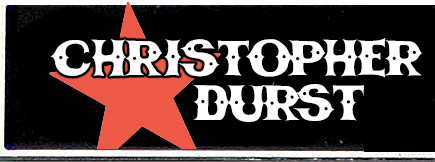
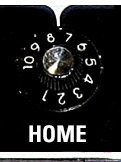
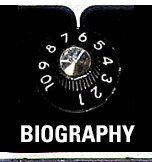

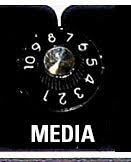
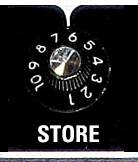
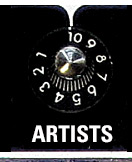
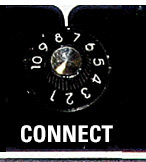

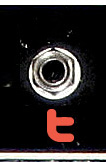
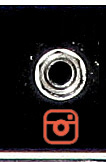

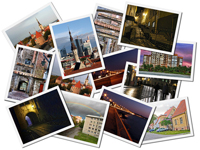 Proper archiving and storage are even more important for someone that’s a career photographer. As a professional photographer it is your responsibility to ensure the protection and safety of your images. The idea of a career photographer losing their entire catalog of imagery due to a lack of motivation, is terrible; you must archive your catalog properly.
Proper archiving and storage are even more important for someone that’s a career photographer. As a professional photographer it is your responsibility to ensure the protection and safety of your images. The idea of a career photographer losing their entire catalog of imagery due to a lack of motivation, is terrible; you must archive your catalog properly. When scanning your images, make sure to scan them at a resolution of at least 250dpi; this will assist you in printing crisp, clear photographs in the future; anything less proves unusable. Though you can scan at a higher resolution, I wouldn’t suggest it; you don’t want surface imperfections such as hair, lint, stains or watermarks to be visible.
When scanning your images, make sure to scan them at a resolution of at least 250dpi; this will assist you in printing crisp, clear photographs in the future; anything less proves unusable. Though you can scan at a higher resolution, I wouldn’t suggest it; you don’t want surface imperfections such as hair, lint, stains or watermarks to be visible. Backup Drives
Backup Drives Archival Disks
Archival Disks Fire-resistant Safes
Fire-resistant Safes PRESERVATION
PRESERVATION Proper Storage
Proper Storage
 Our inspirational documentary reveals intimate details of my personal life and career including the development of my first biographical book, behind-the-scene moments from my network television show, and the increasingly strained relationship with my family due to my unwavering desire to broaden my artistic body of work. Our film also features commentary and in-depth interviews with some of the most influential figures in film, music, and photography regarding the advancements in creative technology and its artistic impact on their industries.
Our inspirational documentary reveals intimate details of my personal life and career including the development of my first biographical book, behind-the-scene moments from my network television show, and the increasingly strained relationship with my family due to my unwavering desire to broaden my artistic body of work. Our film also features commentary and in-depth interviews with some of the most influential figures in film, music, and photography regarding the advancements in creative technology and its artistic impact on their industries.